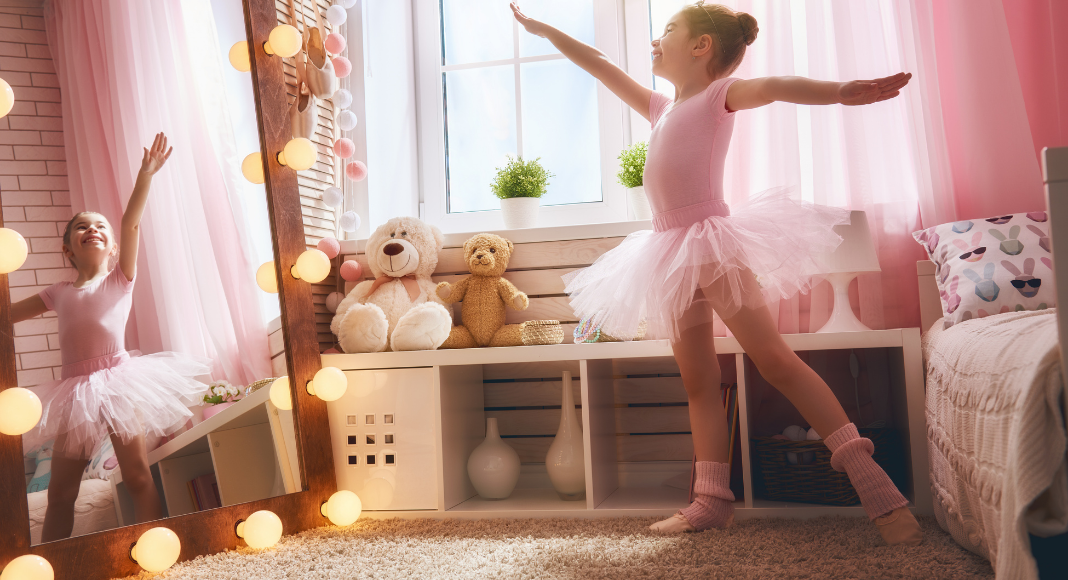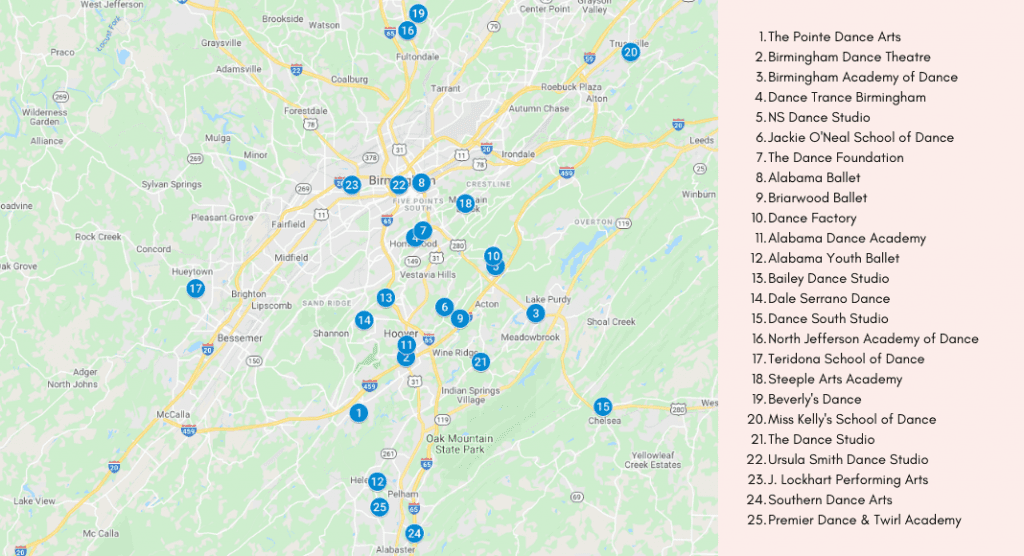 The decision to start an activity for your child is a big one. There are so many great opportunities available for children of all ages and abilities. For many parents, dance is a great option.
The decision to start an activity for your child is a big one. There are so many great opportunities available for children of all ages and abilities. For many parents, dance is a great option.
When I was just two years old, my grandmother wanted me to start taking tap dance lessons. The problem was, at the time, no one in the area where I grew up would take on a child that young. My grandma had a feeling I was destined to dance so she kept calling around until she landed on a young woman just graduating from college and ready to begin teaching. She didn’t offer tap, but she was willing to teach a two-year-old baton twirling.
I started dance lessons at age two and a half and never looked back. By age 13 I had learned and excelled in jazz, ballet, lyrical, and tumbling; I was a national champion baton twirler multiple times over. I traveled the country and had so many great opportunities. The stage was my happy place and in addition to my regular practice schedule, I began teaching dance at the now booming dance studio in my hometown.
Fast forward to the birth of my first daughter, and the questions came hard and fast about when she would be starting her first dance classes. It wasn’t really a matter of if, but when.
When we moved to Hoover just over five years ago, finding a dance studio for my two girls was of high priority. I wanted an environment that was welcoming and offered different opportunities for them to advance if they found something they enjoyed. I had no idea there would be so many options to choose from! The Birmingham area is home to some great opportunities to expose both girls and boys of all ages to the art of dance and performance. From classical ballet to hip hop and everything in between, parents have the opportunity to get children involved in any number of ways. Some even offer classes to parents, too!
Making the decision to enroll in dance isn’t all that different from any other youth activity. You need to do your research and find the best opportunity to meet your needs. If you aren’t sure where to begin, you can start by answering these five questions from a dancer turned dance mom of two.
What type of dance experience are you looking for?
This is an important question to ask yourself. You know your child best, but you, as the parent, will need to determine the level of investment in this activity. Dance can be recreational, informal, instructional, formal, intense and every combination in between. Each dance studio or performing arts academy will provide an experience that lands somewhere on that spectrum. Ballet is often the most formal, while tap and hip hop classes are higher energy. Some offer an annual recital to showcase what children have learned, and some will offer competition teams and training for professional productions.
The experience begins when you walk into the place of business. Do you expect to watch what your child is doing in class either through a window or on a TV monitor? Do you like to receive regular email communication from the studio director or teachers? How clean and bright is the space? The layout of the space, the people sitting at the front desk, the check-in procedures, the waiting area, and more all contribute to the dance experience.
What classes are available?
Each dance studio will have a different offering of dance disciplines available for children of different ages and skill levels. Your child’s age may dictate the classes that are available for enrollment. The time of year may also dictate what is available because, with many dance studios, classes fill up early.
It is also common for combination classes to be offered for younger dancers. For older dancers, a specific sequence of classes is available. For example, a common combination class for young dancers is a ballet and tap experience. This means the children spend the first 25 minutes on ballet skills wearing ballet shoes, take a quick break to change shoes, and then complete the next 20 minutes with tap class. Ballet is considered the foundation for many other disciplines, so some dance instruction will require a certain amount of ballet before moving into jazz. A certain amount of jazz will then likely be required before hip hop and contemporary.
When are classes offered?
Adding another activity for your family is a time commitment. It’s one you want to ensure that you can manage with your existing schedule. Many dance classes are offered during after-school hours, which fall Monday through Friday between the hours of 3:00 p.m. and 7:00 p.m. The classes are often earlier for younger children and get later as they age or move up in skill level. However, that is not always what is most convenient. Working parents might want to ask about weekend options, and those looking for daytime options might be looking for an opportunity to attend classes in the morning.
I always try to coordinate my girls so they have class times that overlap. I will always choose the option that gives us as few trips as possible because it’s easier for us to manage with our busy work schedules. We are also now to the point where we try to double up where we can and choose days with back-to-back options for ballet into jazz or hip hop into contemporary.
Where is the place located in town?
Just like they say on HGTV, it’s all about location. With more than twenty dance studios in the Birmingham metro area, there are many options no matter where you live or work. Proximity to your home or work might not be an important factor, but it does impact your daily schedule. The closer a studio is, the less time it takes to make the trip there and back. Further distances can be a challenge if you are rushing kids from one activity to the next after school.
One class can range from 30 to 60 minutes, so if you like to drop off and run errands rather than sit and wait, the distance to other frequented businesses might make you more efficient with your time. Maybe you want to choose one near your workout facility to kill two birds with one stone.
What can I expect to pay?
Each studio is going to have its own pay structure. But it is nice to have a general understanding of the types of expenses that you will encounter during the year before making a commitment. Some common expenses at the entry level include a registration fee, weekly instruction, and a costume fee. In addition, there will be expenses you will need to factor in like the required attire to meet the class dress code, recital or performance tickets for family members to attend the performance, and picture day costs. Advanced dancers can expect to incur higher costume fees and additional dues to participate in special workshops or competitions. Some studios do offer discounts for multiple children or for those taking multiple disciplines, though.
Fees are typically charged monthly. At the end of the day, dance studios and performing arts academies are local businesses. They operate as such to give a clear picture of their policies and procedures and to avoid surprise fees and charges along the way.

In addition to the five questions above, I’ve added a few pro tips shared by those who know best.
- Pay monthly tuition by check to avoid credit card fees a local business may elect to charge.
- Any age dancer can be considered a beginner. Don’t be afraid to start later, just be sure to ask about age-appropriate classes to ensure a middle-schooler won’t be put in a class with three-year-old kids. That doesn’t make for a quality dance experience for older, newbie dancers.
- Don’t expect to move up every year. Children can be placed into classes based on any number of factors. Staying in the same level class for multiple seasons doesn’t mean progress isn’t being made.
- Dance apparel is pricey but you can shop around for the best deals. Be sure to check local buy, sell, and trade groups. Online retailers are popular and offer discounts if you know exactly what you need. You can never have too many pairs of tights on hand!
- Showcases and recitals are a lot of work for all involved. Expect that there will be a picture day in costume, a dress rehearsal, and multiple performances. The end result is always fun to watch, but be prepared to be behind the curtain and let those not involved watch from the audience.
- Ask for help! Dance moms and dance dads are a tight-knit group. Odds are high that there are a lot of people at the studio who have been where you are and several others navigating dance-life for the first time. Plus, the staff has literally heard it all. Don’t be afraid to ask for help or clarification on anything you encounter during the season.
Happy dancing!











